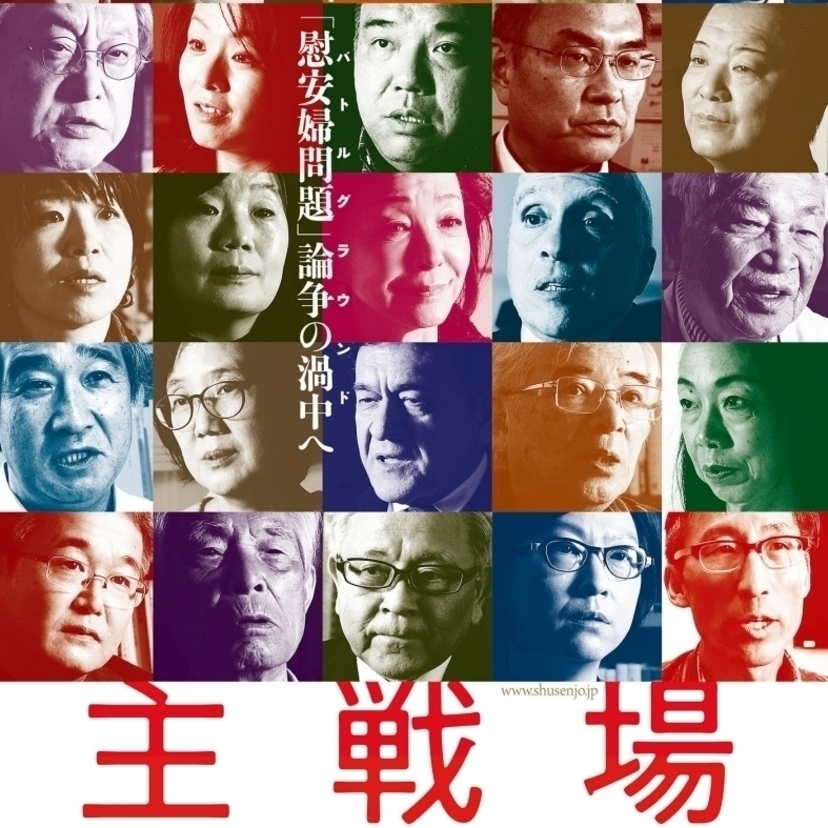In the film, the most unexpected voice among the sex-slave advocates was Hisae Kennedy, whom I have never met. She was once a popular advocate against the sex-slave theory, but as narrated in the film she suddenly disappeared from public view. Surprisingly, in the film she began by criticizing her former friends and supporters, explaining that her views were changed by scholar Ikuhiko Hata's argument that the Nanjing Massacre actually happened, though on a small scale.
She then brought up a report addressing the comfort women issue by the U.S. government's IWG (Nazi War Crimes and Japanese Imperial Government Records Interagency Working Group). The IWG was established by the Clinton administration and took eight years to scrutinize classified documents at a cost of $30 million USD. In the end, it found no new or incriminating information on Japan's wartime comfort women system.
Kennedy herself had introduced the IWG report to Japan, as had some American journalists. However, in the film she dismissed the conclusions of the report, saying: "The purpose of the IWG was to investigate Nazi war crimes. They didn't find anything new about the Japanese comfort woman system because it was like looking for socks in the kitchen cabinet."
An individual is free to change their opinion, but not to bend the facts. The original purpose of the IWG was to investigate Nazi war crimes, as she says. But in response to strong protests by an anti-Japanese federation of Chinese American groups calling itself the "Global Alliance for Preserving the History of WW II in Asia," the official purpose was expanded to include the investigation of alleged war crimes by the Japanese military.
The conclusion of the investigation was that the U.S. military at the time found the comfort women to be ordinary prostitutes. Hence the Americans did not pursue the matter.
Bullying with Comfort Women Statues
Scatted throughout the film, Dezaki shows several videos of public hearings held by local governments in Glendale and San Francisco California, where anti-Japanese comfort women statues were erected. He uses these to emphasize local acceptance of the claims of the sex-slave advocates.
There were efforts of Japanese American parents to stop the statues, which had led to the increased bullying of Japanese American children. Their efforts were all unsuccessful, but Dezaki disputed the bullying itself and argued the claims were made up by a member of the Japanese Diet, Mio Sugita, who he said had never met such parents.
In that, Dezaki was very much like many anti-Japanese activists organizations, which have often regarded Japanese claims as groundless and ignored them.
I myself met several Japanese American mothers whose children were actually bullied or harassed and had long interviews with them. But they were not fighters and they didn't file complaints with the police or ask hospitals to provide medical certificates on the effects of the bullying. Although they didn't have a leader to help them fight the bullying, they still petitioned Prime Minister Abe on the issue of the statues. This is a big step for ordinary mothers. They would not have done so unless they were deeply concerned.
The Conspiracy Theory
This film was two hours and even Dezaki admitted it was too long. If I had been in a position to offer him advice, I would have recommended he cut the latter half of the film, because it was where he lost all logical train of thought.
According to the flyer on the film, while he said he was going to make a fair and neutral documentary about the comfort women issue, he intended to reveal "a conspiracy" behind the controversy in the second half. Instead, he failed quite miserably. and ended up introducing a groundless conspiracy theory.
The conspiracy theory Dezaki introduced in the film but couldn't prove seemed to be as follows: The aim of the Japan Conference and the Abe administration was to rearm and return to the glory of prewar Japan, based on the Yasukuni view of history in which Japan was infallible. The comfort women issue was a historical stain which they want to erase. So they tried to silence former comfort women and deny the existence of the issue.



